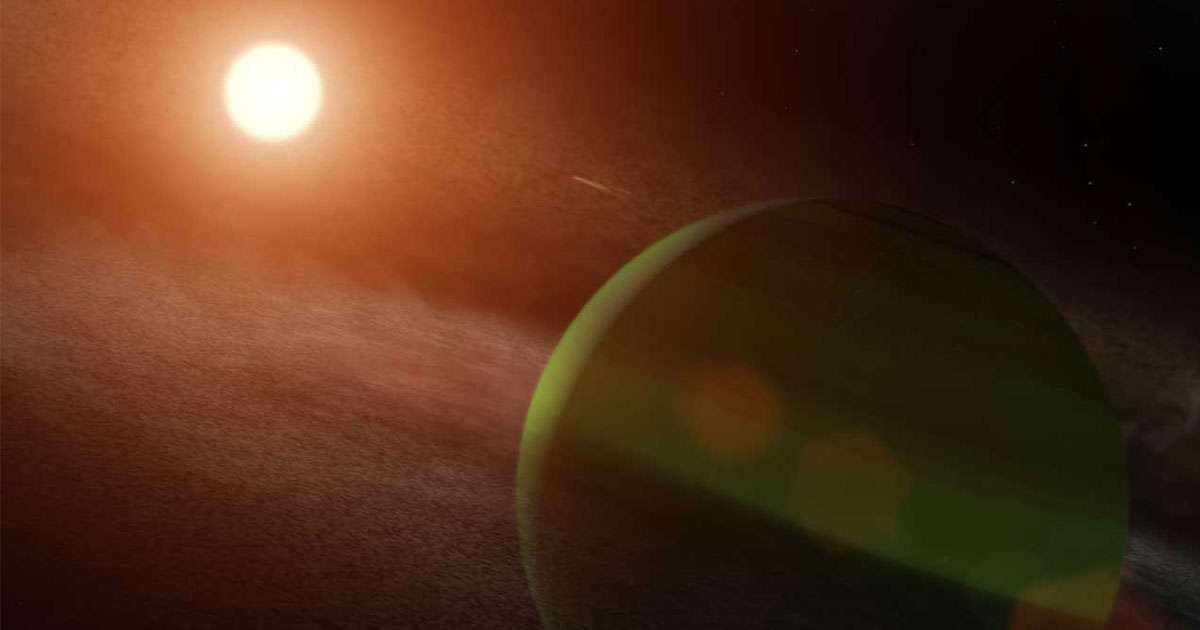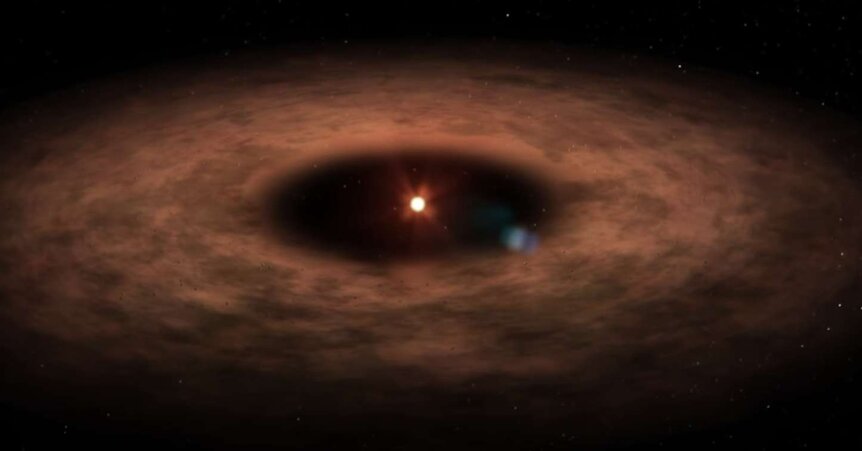Create a free profile to get unlimited access to exclusive videos, sweepstakes, and more!
New Neptune-sized exoplanet found spinning around a young hyperactive star

Exoplanet hunting has been a hot activity for astronomers of late and the hits just keep on coming!
Sifting through data dumps from a pair of NASA programs aimed at ferretting out new exoplanets, you never know what wonders you might find. Info compiled by the space agency's Transiting Exoplanet Survey Satellite (TESS) the retired NASA Spitzer Space Telescope has yielded details of a Neptune-sized planet just 32 light years away named AU Microscopii b (AU Mic b) circling a youthful M-type dwarf star (AU Mic) once every Earth week.
But despite its size and orbital position, AU Mic b has to put up with its volatile, temperamental star whose occasional rage ejects highly irradiated solar flares that would make the planet's surface uninhabitable.
At only 20 to 30 million years old, this cool red dwarf is prone to epic storms that our own Sun, at a much more mellow 4.5 billion years old, does not inflict upon our Big Blue Marble to the same extent.
Being a fairly young star and still shrinking, AU Mic radiates heat by gravitational forces pulling the star inward to condense it.
Earth's Sun and other older, calmer stars fuse hydrogen into helium to create their blazing energy. These sorts of M dwarf stars are ideal candidates for exoplanet hunting expedititons due to their small size making it much easier to identify planets as they transit across their face. Also, a planet's gravitational tug, which can estimate a planet's mass in a technique known as radial velocity, is far easier to spot on tinier M-type dwarfs.
This new Neptune-like planet was revealed in a study published on June 24 in the online journal Nature, co-authored by Bryson Cale, a doctoral student at George Mason University in Fairfax, Virginia Cale and headed up by advisor Peter Plavchan, an assistant professor of physics and astronomy at George Mason.
“AU Mic is a young, nearby M dwarf star. It’s surrounded by a vast debris disk in which moving clumps of dust have been tracked, and now, thanks to TESS and Spitzer, it has a planet with a direct size measurement,” said Cale. “There is no other known system that checks all of these important boxes.”
TESS was in observational mode back in July and August 2018 when AU Mic spit out a volley of mega flares, many of which were greater than the strongest flares ever recorded on our Sun. These blasts were carefully removed from the data to help scientists find AU Mic b.
"We think AU Mic b formed far from the star and migrated inward to its current orbit, something that can happen as planets interact gravitationally with a gas disk or with other planets," added co-author Thomas Barclay, an associate project scientist for TESS at NASA's Goddard Space Flight Center in Maryland.
When planets travel in front of its host star from Earth's perspective in an action called a transit, its journey causes a temporary dip in the star’s brightness. TESS stares at large swaths of the sky called sectors, and during these 27-day watch cycles, the mission’s cameras consistently capture images that allow scientists to monitor changes in stellar brightness. Periodic dips in a star’s brightness indicate the strong potential of a transiting planet, but it normally takes a minumum of two officially observed passes to determine a planet’s presence.
Blocked light caused by a transit depends on that planet’s size and orbital distance. TESS and Spitzer data allowed for a direct measurement of AU Mic b’s size, which was calculated out to be roughly 8% bigger than Neptune.
“As luck would have it, the second of three TESS transits occurred when the spacecraft was near its closest point to Earth. At such times, TESS is not observing because it is busy downlinking all of the stored data,” said co-author Diana Dragomir, a research assistant professor at the University of New Mexico in Albuquerque. “To fill the gap, our team was granted observing time on Spitzer, which caught two additional transits in 2019 and enabled us to confirm the orbital period of AU Mic b.”
This system's discovery was recently celebrated in a new NASA poster as part of its fun Galaxy of Horrors series, which was spawned from a team-up of artists and scientists and produced by NASA's Exoplanet Exploration Program Office. AU Mic is located 31.9 light-years away in the southern constellation Microscopium as part of a local collection of stars called the Beta Pictoris Moving Group. It's a perfect touchstone for understanding how planets and stars form and evolve.
"This devilish young system holds planet AU Mic b captive inside a looming disk of ghostly dust and ceaselessly torments it with deadly blasts of X-rays and other radiation, thwarting any chance of life… as we know it! Beware! There is no escaping the stellar fury of this system. The monstrous flares of AU Mic will have you begging for eternal darkness."
Astronomers have strong suspicions that there extra planets lurking out there at AU Mic, and TESS as well as other Earth observatories could be taking a closer peek at this newborn system in the near future.
"There is an additional candidate transit event seen in the TESS data, and TESS will hopefully revisit AU Mic later this year," said lead author Plavchan. "We are continuing to monitor the star, so stay tuned."
















